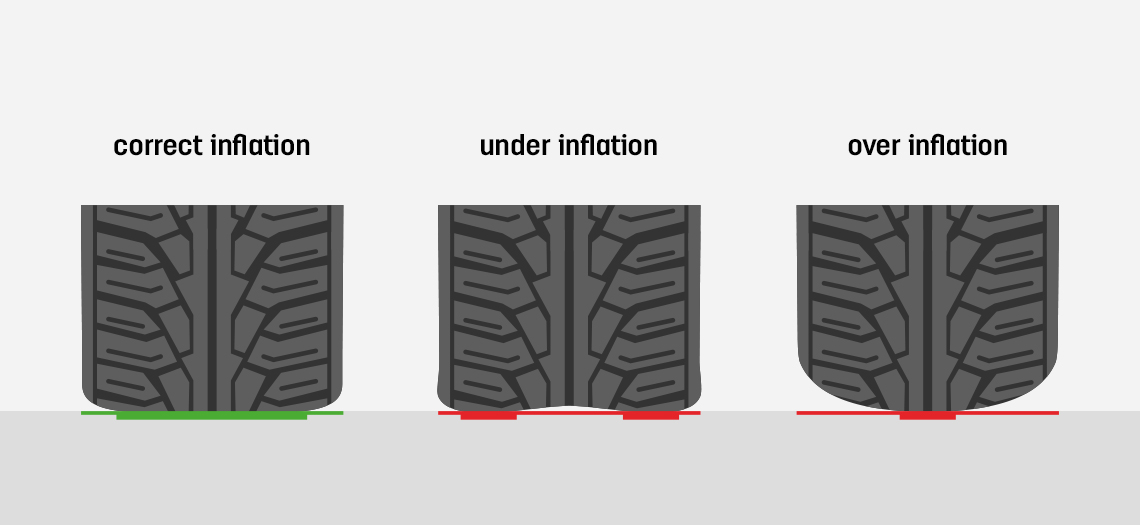The different types of tyres
You get various different types of tyres that is required by law to be fitted to your car at certain periods of time
- Summer tyres: Use these tyres most of the time, if there is no winter road conditions
- Winter tyres: The tyres usually have the following marks next to the side of the tyre “MS” (Mud and Snow). Winter tyres comes in two different styles
- Studded tyres: These tyres have good traction on snow and ice, but produces excessive wear on roadways.
- Non Studded tyres / Friction tyres: These tyres have good traction on snow and slush, somewhat less on ice, reduced road wear
- Emergency tyres: Used when one of your tyres got a puncture or is damaged
- Retreaded tyres: Tyres that have received new top thread rubber added.
| All Season / Summer Tyres | Studless Winter Tyres | Studded Winter Tyres |
|---|---|---|
| Made for dry and wet conditions | Designed to grip snow and slush. Not great for ice | Studs for enhanced traction on ice |
| Normal grooves | Deeper grooves | Deeper grooves & studs |

| Tyres | Tread depth |
|---|---|
| New tyres | 8–9 mm |
| Minimum permitted on summer tyres | 1.6 mm |
| Minimum permitted on winter tyres | 3 mm |
Tyre Inflation & Air pressure
A vehicles tyres can be inflated differently. By inflating the tyre 10-15% over the recommended value stated in the vehicle handbook tend to give better wear and tear on the tyres and increases fuel efficency
| % Percentage Inflation | Result | Reason |
|---|---|---|
| 30% under inflation | Not Good | 1. Increased fuel consumption, 2. tyre lifespan can be cut in half. |
| Correct inflation | Okay | 1. Normal wear and tear on the tyres |
| 10–15% over inflation | Best | 1. Reduced fuel consumption. 2. Tyre longevity increases, while having no detrimental influence on traffic safety. |
| 20% over inflation | Not Good | 1. High wear and tear on the tyres 2. Handeling impacted |

Changing tyres
When changing tyres, make sure that all of them are of the same type. You must not combine summer and winter tyres, or studded and unstudded tyres. The instruction book and registration certificate for your vehicle will provide information on the proper tyres and rims for your vehicle. It is critical for the driving abilities of the automobile that the tyres installed on the same wheel axle have nearly the same depth of tread. Change both front and rear tires at the same time! Tyres are a perishable item. Tyres that are more than 10 years old should be replaced since their friction qualities have degraded. To avoid wheel nuts coming loose after you changed the tyres, retighten the wheel nuts after you have driven 500km
Changing Vehicle Tyres
| Tyres Front | Tyre Rear | Result |
|---|---|---|
| Studded | Studded | Permitted |
| Non Studded | Non Studded | Permitted |
| Studded | Non Studded | Not Permitted |
| Non Studded | Studded | Not Permitted |
Changing Vehicle Tyres + Trailer Tyres
| Vehicle Tyres | Trailer Tyres | Result |
|---|---|---|
| Studded | Studded | Permitted |
| Non Studded | Non Studded | Permitted |
| Studded | Non Studded | Not Permitted |
| Non Studded | Studded | Permitted |
Date to change Tyres by law
| Date | Condition | Tyres Required |
|---|---|---|
| 1 December–31 March. | Winter road conditions | Winter tyres or Summer tyres with snow chains |
| 16 April–30 September | You are prohibited to have studded tyres, unless there are winter road conditions. Note that you are allowed to have winter friction tyres. (Reason is these tyres don't have studs that damage the roads and throw dangerous particles into the air) | Summer tyres or winter friction tyres |
There are winter road conditions when there is snow, ice, slush, or frost on the road.
Emergency tyres
Emergency tyres can be found in the boot of the car. These tyres are often narrower then normal tyres (They are sometimes called temporary tyres). The vehicle handbook specifies the maximum speed, maximum distance, and lifting pressure for the temporary spare. You need to visit a garage as soon as possible to change the emergency tyre. If your emergency tyre is a summer tyre, and you currently have winter tyres on your car, you're permitted to drive with it until the tyre is fixed

Tyres Economy
Tyres are an expensive item. As a result, it is wise to make them last as long as possible. Do the following to reduce tyre economy
- It is critical to maintain proper air pressure.
- Make sure your wheels are properly aligned! Otherwise, your front tyres' outside edges would wear out considerably faster.
- If your automobile pulls diagonally when going along a straight road, it is an indication of improper wheel alignment. Causes of faulty wheel balancing. Have your car wheels balanced
- Tyre wear is affected by your driving style. A smooth & gentle driving style with no excessive starts or hard braking will extend the life of your tires while also lowering your fuel usage.
- Driving at fast speeds causes the tyres to get heated, increasing wear significantly when compared to lower speeds.
